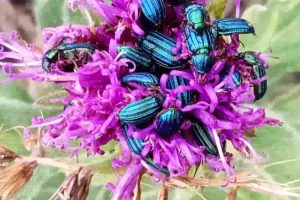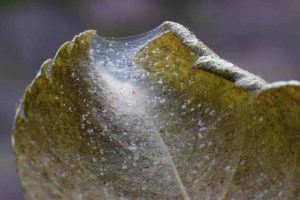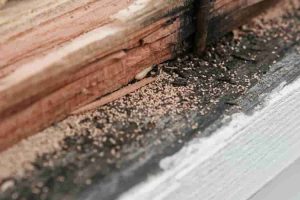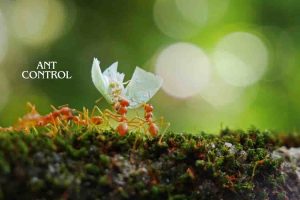Spider Bites
Spider bites are a common concern for many people, especially those living in areas where venomous spiders are prevalent. While most spider bites are harmless, certain types wolf venom injected spider that, like those with bite wound or from the brown recluse or the black widow spider, can cause significant health issues.

Types of Spider Bites
Common Spider Bites
Most spider bites, such mouse spider bites such as those from house spiders or wolf – spiders bite, typically result in mild symptoms like minor swelling, redness, and itching. These first bite symptoms are rarely a cause for concern and often resolve on their own without medical intervention.
Venomous Spider Bites
Venomous spider bites, from brown spiders such as those from the brown recluse or the black widow spider, are more serious. The venom of these spiders can cause severe symptoms and, in rare cases, life-threatening or severe allergic reactions too. It is crucial to identify the type of spider involved in the bite to manage the situation effectively.
Brown Recluse Spider Bite
The brown recluse spider bite is notorious for its severe reactions. Initially, the first redback spider bite in bit first bite area may not be painful, but severe pain can develop within a few hours. Symptoms include intense pain at the bite site, severe swelling, and in severe cases, necrosis of the skin.
Black Widow Spider Bite
A black widow or funnel web spider bite is another serious condition that requires immediate attention. The symptoms include acute back pain and swelling, muscle cramps, and severe abdominal pain. Victims of funnel-web spider bites may also experience nausea and difficulty breathing.
Recognizing the Symptoms of Spider Bites
It’s important to recognize spider bite signs and symptoms early to seek appropriate care. Common spider bite symptoms may include:
Redness and swelling at the bite site
Pain and discomfort
Itching or rash
More severe symptoms associated with mouse spiders with venomous spider bites bite humans may include:
Severe pain that may spread from the bite site
Muscle cramps or spasms
Difficulty breathing or swallowing
Prevention of Spider Bites
To prevent spider bites, take practical steps such as wearing gloves when handling firewood, and debris, or when working in areas where spiders are commonly found. Using insect repellents and maintaining clean, clutter-free environments can also significantly reduce the risk of spider bites.
Understanding the types of spiders in your area and their behaviour can be crucial in preventing unwanted bites and ensuring timely medical treatment for most venomous spiders one encounters.
Immediate Actions and First Aid for Spider Bites
When bitten by a spider, the first steps you take can significantly impact the severity of symptoms and the overall outcome other serious spider bites may have, especially with venomous spider bites.
What to Do Immediately After a Spider Bite
Clean the Bite Site: Wash the area thoroughly with soap and water to remove as much of the spider’s venom as possible.
Apply Ice: Reduce swelling and numb pain by applying an ice pack to the affected area. Wrap the ice in a cloth to avoid direct skin contact and apply intermittently.
Elevate the Affected Area: If the bite is on a limb, elevating it can help reduce swelling and discomfort.
Seeking Medical Attention
For most spider bites, over-the-counter pain relievers and anti-inflammatory medications are sufficient to relieve the symptoms of the bite area a spider. However, certain situations require immediate medical attention:
Signs of Allergic Reaction: Difficulty breathing, swelling of the face or mouth, or a rash spreading away from the bite site are signs of a severe allergic reaction. Call triple zero (000) or head to the emergency room immediately.
Suspected Venomous Spider Bites: If there is a possibility that the bite came from a venomous spider like the brown recluse or the black widow spider, it’s crucial to seek medical help right away. The sooner antivenom can be administered, the better the outcome.
Symptoms That Require Medical Consultation
Severe pain that persists or worsens
Increasing redness or pus, which might indicate an infection
Fever or chills
How to Identify Dangerous Spiders
Characteristics of Venomous Spiders
Brown Recluse Spider: Often identified by the violin-shaped mark on its back, this spider prefers dark and undisturbed places. The brown recluse is notorious for its potent venom, which can cause significant tissue damage.
Black Widow Spider: Recognizable by the red hourglass marking on its abdomen, the black widow’s bite can cause severe systemic reactions affecting the nervous system.
Funnel Web Spiders: These are among the most feared spiders in Sydney Australia, known for their aggressive nature and highly toxic venom. They are large, dark, and glossy, with visible fangs.
Habitats of Common Venomous Spiders
Understanding where venomous spiders are likely to be found can help you avoid unwanted encounters. Most dangerous spiders prefer secluded areas:
Brown Recluse Spiders: Found in dark, secluded areas within buildings, such as basements, closets, and attics.
Black Widow Spiders: Often located in undisturbed, cluttered areas in garages, woodpiles, and sheds.
Funnel Web Spiders: Typically found in moist, cool environments. They might be in burrows in the ground or in rotten logs.
Preventative Measures
Inspect and Shake Out Garments and Shoes: Especially if stored in a garage, shed, or basement.
Use Caution When Handling Firewood or Debris: Always wear gloves and long sleeves.
Seal Cracks and Crevices: To prevent spiders from entering the home.
Understanding and respecting the habitats and behaviors of spiders are essential for coexisting safely with these often misunderstood creatures. Preventative measures, awareness of the types of spiders in your area, and knowing how to respond to and prevent bites from other spiders can greatly reduce the risks associated with spider bites.
Long-Term Management and Understanding of Spider Bite Effects
Even after the immediate danger of a spider bite on human skin has passed, it’s important to manage the site of the bite to relieve pain, prevent secondary infections and monitor for any delayed symptoms that might emerge. This is especially crucial with bites from venomous spiders like the brown recluse or the black widow.
Managing Bite Site Post-Bite
Regular Cleaning: Continue to keep the bite site clean to prevent infection. Use mild soap and warm water, and gently pat the area dry.
Monitor for Changes: Watch for changes in color, size, or pain levels at the bite site. Increasing redness, pus, or spreading discoloration can indicate an infection or necrosis, particularly with brown recluse spider bites.
Follow-Up Care: If you’ve seen a doctor, follow their recommendations for care, which may include antibiotics or other treatments to manage symptoms or complications.
Understanding Chronic Symptoms
In some cases different spider bites, particularly with venomous spider bites occur, victims may experience ongoing problems such as:
Persistent Pain: Some spider venoms can cause lingering nerve pain or joint pain, which might require pain management strategies.
Scarring and Skin Changes: Necrotic bites, especially from the brown recluse, can leave significant scarring. Professional care from a dermatologist or plastic surgeon may be necessary.
Emotional Impact: Having a severe reaction to a spider bite can also lead to anxiety or fear of spiders, known as arachnophobia, which might benefit from psychological support or counseling.
Educating Others
Sharing knowledge about spider bite prevention and management can be beneficial. Educate your family and community, especially children, on how to recognize venomous spiders and the importance of caution in environments where spiders are common.
Staying Safe Among Spiders
While the risk of severe spider bites is relatively low, the potential severity of bites from venomous spiders like the brown recluse, black widow, and funnel web spider necessitates caution and awareness of bug bites. By taking preventative measures, knowing how to treat a spider bite, and understanding when to seek medical help, you can minimize your risk wolf spider bite and ensure that any spider bites you do suffer are no more than a minor inconvenience.
Remember, most spiders are harmless and play a crucial role in the ecosystem as natural pest controllers. Learning to coexist safely with spiders not only helps protect you from bites but also respects these fascinating creatures and their role in our environment.
Promoting Coexistence with Spiders: Educational and Community Initiatives
As we navigate life alongside these often misunderstood creatures, fostering a community understanding and respect for spiders is essential. Here are some strategies and initiatives that can help promote safe and informed coexistence with spiders.
Educational Workshops and Seminars
Organizing community workshops and educational seminars on spider identification, their ecological benefits, and the realities of spider bites can demystify myths most spiders and reduce unwarranted fear. These events can cover:
Identification of Common and Venomous Spiders: Teaching people how to recognize different spider species, especially those that are venomous.
First Aid for Spider Bites: Practical sessions on immediate actions to take after a spider bite, which can empower people to handle these situations calmly and effectively.
Environmental Conservation: Highlighting the role of spiders in natural pest control and their importance in maintaining the ecological balance.
School Programs
Integrating spider education into school curriculums can help cultivate respect and understanding from a young age. Activities could include:
Interactive Lessons: Using real-life examples and interactive tools to teach children about different types of spiders.
Field Trips: Visits to natural history museums or local parks with an expert to learn about local wildlife, including spiders.
Art and Science Projects: Encouraging students to create projects based on spiders, which can help them appreciate the diversity and complexity of these creatures.
Community Citizen Science Projects
Encouraging community members to participate in spider surveys and citizen science projects can enhance public engagement and contribute valuable data for scientific research. These projects can involve:
Tracking Spider Populations: Mapping local spider species and their habitats to monitor changes and help in conservation efforts.
Spider-friendly Gardening: Promoting gardening practices that support a healthy environment for spiders, such as reducing pesticide use and planting native flora.
Data Collection and Reporting: Teaching individuals how to safely capture and report sightings of rare or significant spider species to local wildlife authorities or academic institutions.
Public Health Campaigns
Public health officials can lead campaigns focusing on prevention and treatment of spider bites, particularly in regions where venomous spiders are prevalent. These campaigns can include:
Distribution of Educational Materials: Flyers, posters, and online content that provide clear information on recognizing venomous spiders and the proper steps to take following a bite.
Community Health Talks: Engaging talks and Q&A sessions with experts such as toxicologists, entomologists, and medical professionals to address public concerns and share safety tips.
Emergency Response Training: Training sessions for first responders and medical personnel on the specific protocols for treating venomous spider bites, ensuring rapid and appropriate care.
By adopting these educational and preventative strategies, communities can reduce the risks associated with spider bites while enhancing their understanding and appreciation of these essential arachnids. Through education and awareness, we can transform fear into respect, creating a safer and more informed environment for both humans and spiders.
Advanced Medical Insights and Treatments for Spider Bites
Understanding the medical complexities and advancements in treating severe and dangerous spider’ bites is crucial for both healthcare professionals and the public. This knowledge not only aids in better treatment outcomes but also enhances general preparedness in communities where venomous spiders are a concern.
Innovations in Antivenom Development
The development of antivenoms is a critical area of research that has seen significant advancements. Modern antivenoms are more effective and safer, reducing the chances of adverse reactions. Research continues into creating broader-spectrum antivenoms that can neutralize the venom of multiple spider species, which would be particularly useful in areas with diverse spider populations.
Understanding Spider Venom
Spider venom is a complex cocktail of enzymes, proteins, and other molecules, each evolved to target specific biological systems. Scientists study these compounds not only to improve antivenom but also to explore potential medical applications, such as painkillers and anti-cancer drugs. By decoding the molecular structure of these venoms, researchers can discover new ways to combat various human ailments.
Enhanced Medical Protocols
Medical protocols for handling spider bites have improved with better diagnostic tools and treatment strategies. Enhanced training for medical staff ensures rapid identification and management of spider bites, particularly venomous ones. Protocols now often include:
Rapid Assessment Techniques: Quick diagnostic tests to determine the type of venom involved, if any, which can guide treatment decisions.
Supportive Care Strategies: Detailed guidelines on managing symptoms such as pain, inflammation, and systemic reactions to provide comprehensive care for bite victims.
Public Access to Medical Resources
Improving public access to medical resources and information is vital. Many health departments and hospitals now offer online resources and mobile apps that provide advice on first aid for spider bites and information on when to seek medical help. These resources are designed to be accessible, providing clear instructions and support to individuals who may be in remote or rural locations.
Future Directions in Spider Bite Management
As our understanding of the spider bite biology and venom continues to grow, so does our ability to manage and treat spider bites more effectively. Looking to the future, several areas hold promise:
Genetic Research
Advancements in genetic research could lead to breakthroughs in how we understand spider venom and its effects on humans. By studying the genetics of venom production, scientists hope to develop more targeted antivenoms and other therapeutic agents.
Community Involvement
Increasing community involvement in monitoring and reporting spider encounters can provide valuable data that helps track changes in spider populations and potential threats. Community-driven data can also assist health professionals in identifying high-risk areas and tailoring public health responses accordingly.
Global Collaboration
As global travel and climate change potentially increase the spread of venomous spiders into new regions, international collaboration becomes essential. Sharing research, resources, and strategies on a global scale can enhance worldwide preparedness and response capabilities.
On-Time Service

5 STAR SERVICE BASED ON 100+ GOOGLE REVIEWS
PET & FAMILY FRIENDLY TREATMENT

ALL YEAR-ROUND PROTECTION
Take Back Control Now
8
REASON TO CHOOSE SAFE PEST CONTROL
- Guarantee protection all year-round
- 30 Years Collective Experience
- An impeccable reputation across Sydney's Suburbs
- Certified treatments & written Warranty On all work carried out
- Family Owned & Operated
- Rated #1 Pest Control In Sydney NSW
- No Mess, No Smell
- Family & Pet Friendly Treatments
REQUEST A QUOTE







